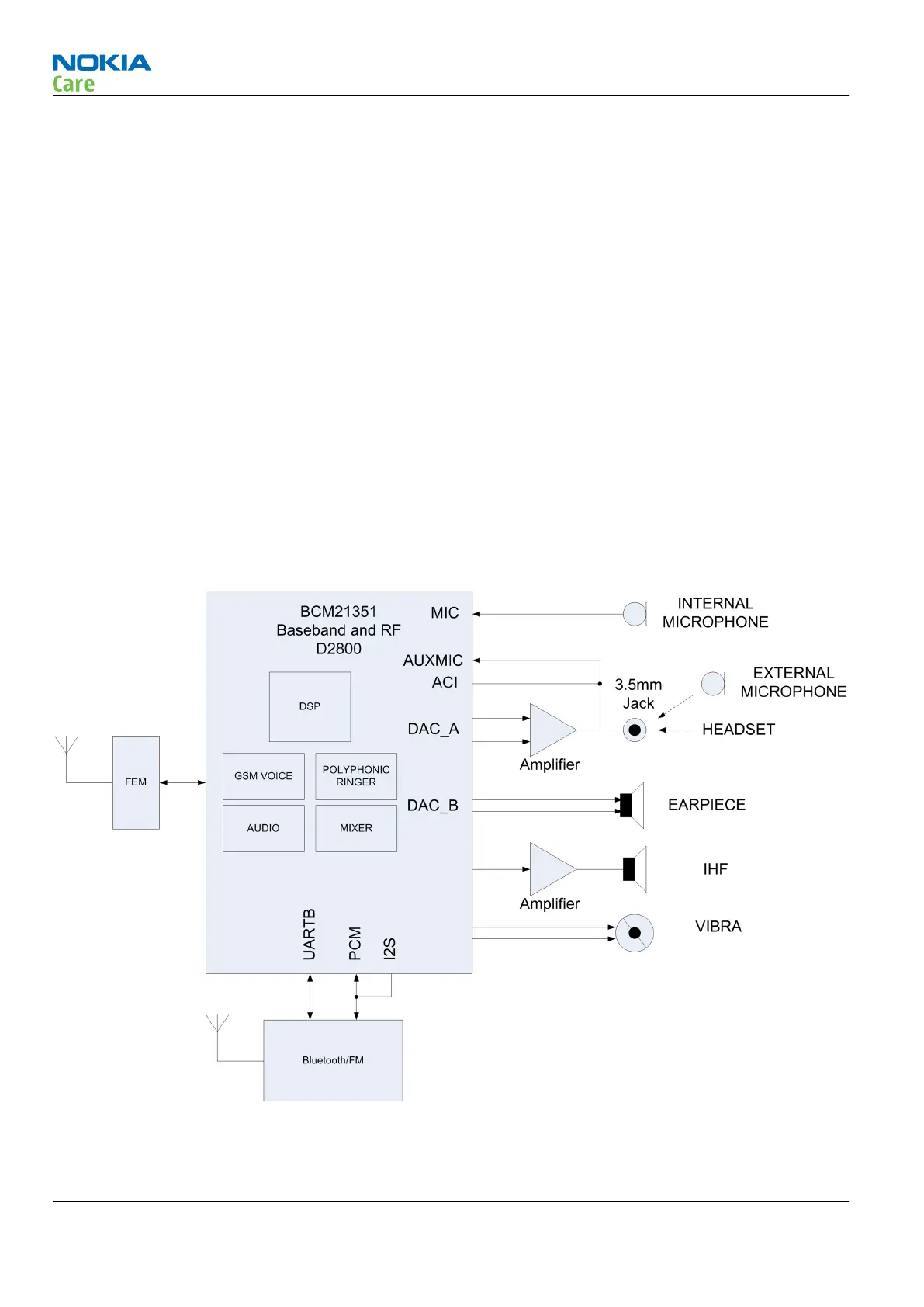•
FM Radio Recording
•
Video Recording
•
Stored Content Playback (audio such as MP3, WAV, AAC etc. as well as combined with video)
•
Above services combined with a Bluetooth headset
Several audio paths exist for most audio applications. For example, voice signals can be sampled using either
an internal or an external microphone. Audio samples can be played back through the earpiece, IHF speaker
or through the headset. Finally, hearing aids are supported by the addition of a Tele-coil, capable of
transferring the audio into a hearing aid through induction.
The follow diagram shows six audio paths:
Internal Microphone: microphone path 1 through ARXMICP1 and ARXMICN1. The differential pair goes through
a few passive components and then to the audio connector AUDIOCONN directly.
External Microphone: microphone path 2 through ARXMICP2 and ARXMICN2. The differential signal goes
through the EMI filter, some passive components and then to the audio connector AVCONN.
Headset: DDACAMP channel A. This signal is a 100mW left and right differential pair. This signal goes through
an external amplifier N2000, some passive components and then to the audio connector AVCONN.
Earpiece: DDACAMP channel B. The differential pair goes to the audio connector AUDIOCONN directly.
IHF: IHFAMP left channel. The differential pair goes through the 100nH inductors and then to the audio
connector AUDIOCONN.
Vibra: VBRAMP right channel. The differential pair go to the audio connector AUDIOCONN directly.
Figure 51 Audio block diagram
RM-497
System Module
Page 5 – 38 COMPANY CONFIDENTIAL Issue 1
Copyright © 2010 Nokia. All rights reserved.

